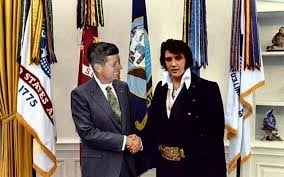
A Siberian works his way from poverty and obscurity to become the primary confidant of the Tsarina. He plays a pivotal, albeit unintentional, role in the collapse of the Romanov Dynasty and the birth of communist societies. He was known as the Mad Monk, though he was neither. He did, however, spent time in a monastery debating theological ideas, and sported a greatly unkempt appearance, which when combined with his captivating, harrowing eyes and strange demeanor, made him at once the target of suspicion, wonder, and revulsion.
This life story is fascinating enough without needing embellishment. But there are some persons who find humans landing a probe on a comet to be ho-hum while being simultaneously fascinated by evidence-free doomsday tales of a hypothetical Planet X. In the same way, there are some who remain unsatisfied with amazing true historical accounts and crave a still more spectacular story.
Hence, the idea that Rasputin was nearly indestructible was born. Allegedly, killing him required that he be poisoned, shot multiple times, beaten, and tossed bound into a river, and even all that was barely enough. For maximum efficiency, this fable sometimes holds that he owed his quasi-invincibility to his mystical powers, the same supernatural abilities that Tsarina Alexandra was convinced had saved her hemophiliac son. Because she was certain he had, the self-proclaimed miracle healer and seer became the darling of the ruling matriarch.
She wanted to keep him close, literally and figuratively, so the man who once lived as a peasant received a massive upgrade to castles, ballrooms, and carriages. He enjoyed high society status, had access to the royal inner circle, and influenced politics, culture, and society. Most everyone of relevance had a strong opinion about him, either good or bad.
Some of those in the latter category were insiders who thought Rasputin was dooming the Romanovs and Russia, and wanted him out of the way permanently. The first attempt on Rasputin’s life came in the summer of 1914, when he was stabbed in the abdomen. He survived but a year later, conspirators hatched a second assassination plot, which was uncovered before it could be acted upon.
In December 1916 came another attempt, and the third time was the harm. Led by Prince Felix Yusupov, four other conspirators lured Rasputin to a St. Petersburg palace, where the dastardly deed was done.
Three are three sources which relate what took place in those early morning hours of Dec. 30: The written accounts of Yusupov and his henchman, Vladimir Purishkevich; and the autopsy report. There are some key differences between the first two sources and the other one.
Yusupov recalled that he offered Rasputin tea, cakes, and alcohol, all laced with cyanide. Despite being plied with a lethal chemical compound, Rasputin merely complained about a headache and fiery stomach.
The rest of the putative first-hand account from the assailants goes like this: At 2:30 a.m., Yusopov fired a bullet into Rasputin’s stomach at close range. The victim collapsed, seemingly dead. Rasputin was left lying there for nearly an hour before coming to and attacking Yusupov. Rasputin rushed past the other conspirators, who fired shots at the fleeing man. This time, the killers shot him through the back and head, yet still he survived.
A frustrated and enraged Yusupov then grabbed a club and began pummeling Rasputin, whose body was eventually bound and tossed into the icy Malaya Neveka River. Some claimed that when found, Rasputin was making the sign of the cross, proof he had been thrown living from the bridge and worked free of his ropes.
The autopsy shows something far less dramatic than all this. First, the pathologist found no cyanide present, even though he looked for it specifically since Yusupov said he plied Rasputin treats laden with it.
Second, while three bullet wounds were found, the pathologist determined that two bullets hit the torso and one entered the forehead. These entered from the front, not in the back as would be consistent with a fleeing man. Moreover, gunpowder residue was found near the wound, suggesting the gun was fired from close-range, not from across the room. The pathologist also reported that the wounds’ angle indicated the victim was lying down when shot.
Also of note, the autopsy referenced no water in Rasputin’s lungs. And while photographs of the frozen corpse do show Rasputin’s arms to be free, they are not making the sign of the cross.
In summary, the autopsy shows Rasputin was shot from behind, collapsed, rolled onto his back, and was then shot through the head as he lay dying. There was no poison, no water-filled lungs, and no bound, beaten body. He had merely been done in by a lethal head shot.
The embellishments have been fabricated to create a fascinating but false narrative of Rasputin being nearly indestructible. That he had survived two earlier assassination plots, including one that came to fruition, may have sparked the notion of invincibility, and his mystical nature likely added to the post-mortem reputation. Such unwarranted speculation is common when fascinating life comes to a premature end, and has happened with the likes of JFK and Elvis.

These “sources”… why should I believe them?
At the end of the day; people are going to believe whatever they want.